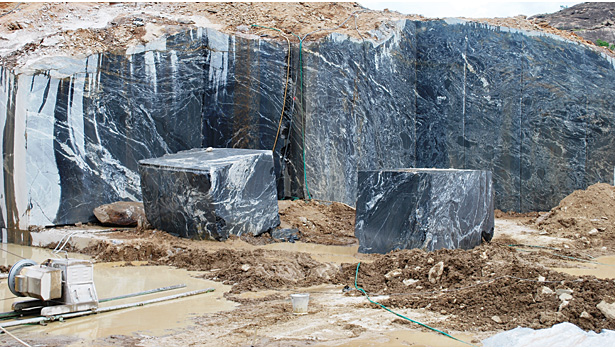The Surprise Treasures: Discovering Granite Quarries in South Africa
The Surprise Treasures: Discovering Granite Quarries in South Africa
Blog Article
Introducing the Mysteries of Granite Quarrying: Where Strength and Sophistication Meet
The globe of granite quarrying is a realm where the raw stamina of nature merges with human artistry to create frameworks that stand the examination of time with an air of elegance. From the depths of quarries to the careful polishing in workshops, the procedure of changing granite into architectural marvels is a complicated dancing of practice and development. As we peer into the midsts of this old craft, we start to uncover the hidden ins and outs that form the very essence of our built atmosphere.
The Origins of Granite Quarrying
In the record of building background, the beginnings of granite quarrying are shrouded in a tapestry of old craftsmanship and geological marvels. Dating back to ancient Egypt and Mesopotamia, the extraction of granite from quarries marked the beginning of a journey that would ultimately cause the development of a few of the globe's most iconic structures.
Granite quarrying's origins can be mapped to the skilled artisans that acknowledged the rock's resilience and aesthetic appeal. With a mix of primitive tools and large resolution, these early quarry workers discovered granite blocks that would certainly come to be the foundation of civilizations.
As civilizations evolved, so did the techniques of quarrying granite. The Romans, renowned for their design expertise, established sophisticated techniques for extracting granite to construct monoliths, holy places, and roads that stood the examination of time.
The tradition of these ancient quarrying methods proceeds to form contemporary architecture, with granite remaining an icon of stamina and sophistication in building and construction jobs around the world. (granite quarries in south africa)
Tools of the Quarrying Trade
The evolution of granite quarrying strategies from ancient worlds to modern times highlights the crucial duty played by the devices of the quarrying sell shaping the industry's techniques. In old times, quarrying tools were rudimentary, usually containing chisels, hammers, and wedges made from products like bronze or iron. These tools called for considerable manpower and time to extract granite obstructs from quarries.

Additionally, the introduction of pneumatic tools and high-powered equipment has actually significantly reduced the physical labor needed in quarrying procedures, improving employee security and efficiency. As the quarrying market remains to innovate, the tools of the trade continue to be at the center of driving progression and forming the future of granite removal.
Drawing Out Blocks of Granite
Utilizing accuracy equipment and advanced strategies, the extraction of granite blocks from quarries has actually become an innovative process in the modern quarrying market. my sources Controlled blowing up methods are after that used to damage apart the granite into workable sections.

Sprucing Up and Completing Techniques
To achieve a flawless surface on granite blocks, experienced artisans use a collection of meticulous polishing and completing methods. After the initial extraction and shaping processes, the granite blocks go through an extensive polishing phase to improve their all-natural beauty and resilience.
Along with sprucing up, completing methods are put on further refine the granite's appearance. These techniques may consist of flaming, sharpening, or brushing, each offering special structures and finishes to fit different aesthetic preferences. Flaming, as an example, involves exposing the granite surface area to high temperatures to develop a harsh, distinctive finish, perfect for outdoor applications where slip-resistance is crucial. Refining, on the various other hand, supplies a matte coating that is smooth to the touch, perfect site link for interior counter tops and flooring. By thoroughly choosing and using these polishing and ending up methods, artisans can transform raw granite blocks right into exquisite pieces that display both strength and beauty.

Ecological Effect and Sustainability
With the expanding focus on environmental consciousness in the market, granite quarrying techniques are significantly inspected for their influence on all-natural sources and long-lasting sustainability. Quarrying for granite can have substantial ecological implications. The extraction procedure typically includes the use of heavy machinery, dynamites, and big amounts of water, resulting in habitat devastation, dirt erosion, and water contamination. In addition, the transport of granite from quarries to processing centers creates carbon emissions, additionally adding to environmental destruction. granite quarries in south africa.
To alleviate these impacts and ensure sustainability in granite quarrying, sector stakeholders are taking on numerous actions. Applying innovative innovations to lower energy usage and water use, redeeming quarried land for ecological restoration, and promoting responsible sourcing practices are some strategies being employed. Additionally, accreditations such as the Forest Stewardship Council (FSC) and the Leadership in Energy and Environmental Design (LEED) aid customers recognize environmentally friendly granite products.
Verdict
Finally, granite quarrying is a process that requires specialized devices and techniques to essence blocks of granite and polish them to a high degree of surface. While the ecological effect of quarrying can be Continued significant, initiatives are being made to improve sustainability techniques in the market. Overall, granite quarrying is a fragile balance in between utilizing the toughness and sophistication of this natural stone while minimizing its effect on the atmosphere.
Report this page